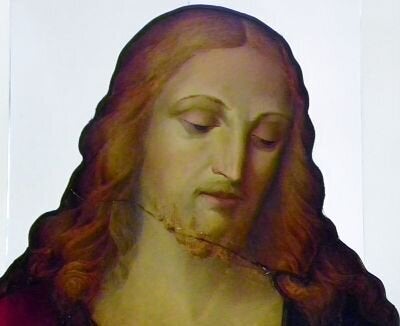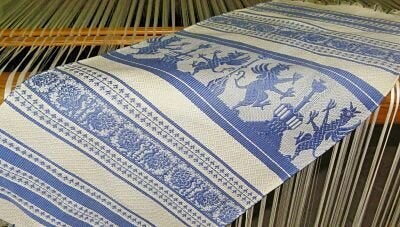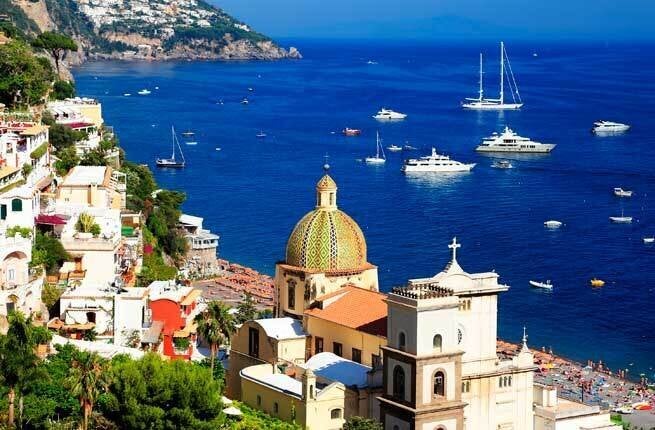On your next trip to Italy, what would you think about learning to make stained glass, or to weave on a 19th century loom? It represents a refreshing change from shoe shopping; certainly more edifying and probably less tiring.
Look no further than Perugia, a gem of a small city in Umbria, smack-dab in the centre of Italy, which has far more to it - thankfully -- than the Amanda Knox trial(s). It has more to it than the Perugina chocolate factory, though the latter is worth a visit for many reasons, not the least of which is the all-you-can-eat part of the tour. And for artistically-inclined travelers who want to enjoy a hands-on experience in centuries-old craftsmanship, there are two museums in Perugia that should not be missed. Both, like Perugina, serve also as workshops/factories and offer lessons (in Italian and English).
After visiting in 2014, I stood in awe of their histories and products, and also of the fact that neither gets much publicity. Part of that is a particularly Italian thing: small, family-run ateliers producing something truly exceptional put their focus on quality. PR gets abandoned in favour of attending to detail. And detail is key in the work done at Studio Moretti Caselli and the Laboratorio Giuditta Brozzetti.
Studio Moretti Caselli
Leonardo da Vinci likely never imagined that centuries after his death, his masterpiece, The Last Supper, would be reproduced in stained glass. But in the early 1920s, an American client commissioned the Studio Moretti Caselli to do exactly that. Between 1925 and 1930, a 40 square metre duplicate was created for a chapel at the famous Forest Lawn Cemetery, in Glendale, California. At the time, the Moretti family were already well-known as masters of stained glass, and had created windows for some of Umbria's most famous churches: Assisi's Santa Maria degli Angeli, and Santa Chiara; Perugia's San Domenico, and Cathedral of San Lorenzo; the Cathedral of Orvieto.
The studio was founded in 1859 by Francesco Moretti and set up in a house -- previously owned by Perugia's wealthy and powerful (back in the day) Baglioni family -- full of high ceilings and windows near the historic Rocca Paolina. Five generations later, Moretti family descendants still share this cultural heritage, accepting both public and private commissions. When I visited in December, I was lucky enough to see Moretti's great-great-great-granddaughter, Maddalena, at work.
The studio contains much furniture and art accumulated over the years, as well as books, photographs and sketches, and works that either had to be returned to the manufacturer or never even made it out the door. One such work is the head of Christ from the Last Supper, with a visible crack in the glass. Christ's head, it seems, had to be redone three times, and the head of Judas five.

Head of Christ -- with a flaw -- on display at Studio Moretti Caselli
(photo credit: Rondi Adamson)
Another fine example of the studio's history is the nearly life-sized portrait of Italy's Queen Margherita, commissioned in 1881 for the 20th anniversary of the unification of Italy. Even standing at a close distance, I would have assumed it was a painting, had I not known otherwise.
Studio Moretti Caselli can be seen by appointment. Courses range from those lasting four hours to those lasting 34 hours.
Laboratorio Giuditta Brozzetti
Located inside the 13th century church San Francesco delle Donne, one of the oldest Franciscan churches in Italy and the oldest in Perugia, the Laboratorio Giuditta Brozzetti would be worth visiting merely for its architectural resplendence and back-story: it is said the spot for the church was chosen because St. Francis of Assisi preached there, and eventually, the church was passed on to Benedictine sisters and became a convent (hence 'Delle Donne,' of the women). Over the centuries, it housed a school for girls and a ceramics factory, but it was in 1921 -- when Giuditta Brozzetti founded her textile business and school -- that its current incarnation began.
Brozzetti was a female entrepreneur in Italy before such terminology was trendy, employing and training local women, designing and selling quality household items that also respected Umbria's rich history of textile production. Today, as at its foundation, almost everything created in the factory that bears her name is hand-woven on 19th century looms. On the premises you will find looms (which are operational) much older than that, and Marta Cucchia (great-granddaughter of Brozzetti) keeping up the family tradition. Cucchia, if she has time, is only too happy to demonstrate for visitors how the different looms function.
Among the items most produced and sold by the Laboratorio are tablecloths and table-runners embroidered with medieval designs, including the symbols of Perugia, the lion and the griffin (Canadian author Sandra Cordon took lessons at the laboratorio in order to accurately depict the process in her recent novel, The Virgin and the Griffin).

A finished product draped over a work-in-progress at Laboratorio Giuditta Brozzetti
(photo credit: Rondi Adamson)
Also popular are copies of designs that appear on clothing in the paintings of some of Italy's masters of the 14th and 15th centuries, including Simone Martini, Giotto and Leonardo da Vinci.
Laboratorio Giuditta Brozzetti can be visited on a drop-in basis, or by appointment for those wishing a guided tour. Courses in weaving, or in lace-making and embroidery, range from those lasting one day to those lasting three weeks.
MORE ON HUFFPOST:
